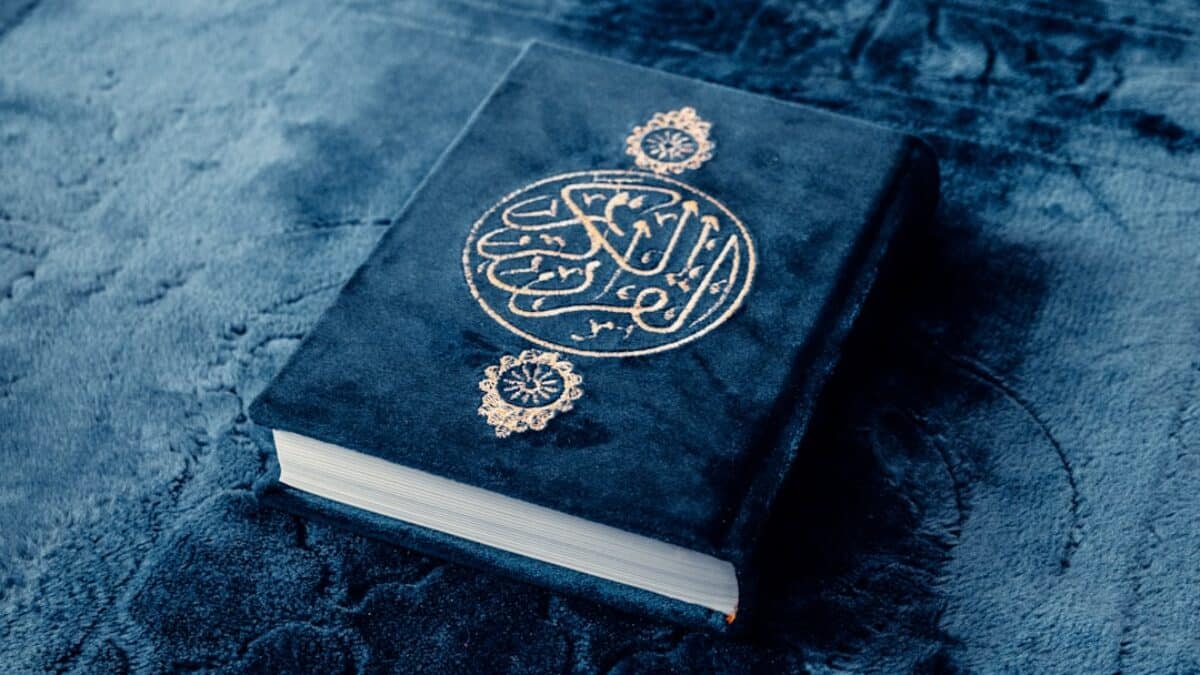The Qur’an is more than a book; it is a living conversation between the Divine and humanity. Yet for millions of non-Arabic speakers, that conversation feels muffled, filtered through translations that may distort tone, miss nuance, or reduce layered meanings to a single line. Understanding the Quran with accurate translation is therefore not a luxury—it is the first practical step toward a heartfelt, intellectually honest, and spiritually transformative engagement with revelation.
Understanding Accurate Quranic Translation
When we open an English, French, Urdu, or Indonesian rendering of the Qur’an, we are not holding the Qur’an in the technical sense; we are holding a human tafsir (interpretation) compressed into another language. The Arabic Qur’an is wahi (divine speech) whose phonetic structure, rhetorical devices, and semantic range are all part of its message. Translation, by contrast, is ijtihād (scholarly effort) that inevitably leaves something behind. Accuracy thus means minimizing loss, not eliminating it.
What Makes a Translation “Accurate”?
- Linguistic fidelity: The translator must demonstrate mastery of classical Arabic grammar, sarf (morphology), balāgha (rhetoric), and qirā’āt (canonical readings).
- Situational context (asbāb al-nuzūl): Each verse was revealed against a historical backdrop; ignoring it invites misinterpretation.
- Theological framework: The translator’s creedal lens—Ash‘ari, Athari, Sufi, modernist—shapes choices of wording.
- Lexical precision: Arabic roots often carry 10–15 shades of meaning; choosing one English equivalent requires extensive justification.
Key Components of a Reliable Quranic Translation
1. Source Manuscripts and Canonical Readings
Authentic translation begins with the Uthmāī muṣḥaf in the Ḥafṣ ʿan ʿĀṣim reading, used by over 95 % of the Muslim world today. Yet alternate qirā’āt—like Warsh ʿan Nāfiʿ—sometimes reveal nuances hidden in the dominant reading. A transparent translator will footnote these variances.
2. Classical Commentaries (Tafsīr) as Guardrails
- Al-Ṭabarī (d. 310 AH): Provides chains of transmission for every interpretation.
- Ibn Kathīr (d. 774 AH): Prioritizes the Qur’an’s self-explanation and authentic hadith.
- Al-Rāzi (d. 606 AH): Offers theological and linguistic depth.
- Al-Qurṭubī (d. 671 AH): Integrates legal rulings into verse commentary.
Modern translators who weave insights from these sources give readers a built-in mini-tafsīr, not merely a word-for-word gloss.
3. Annotation System
| Symbol | Meaning | Example Footnote |
|---|---|---|
| * | Linguistic nuance | Arabic raḥma combines mercy, love, and protective care. |
| † | Legal implication | This verse forms the basis for the majority opinion on inheritance shares. |
| ‡ | Alternate reading | Warsh reads fa-tabayyana instead of fa-tabayyana, changing the meaning to “so they became clear.” |
Benefits and Importance
Spiritual Intimacy
Reciting the Qur’an without comprehension can still yield barakah, but understanding turns ritual recitation (tilāwah) into intimate dialogue. When you read “Your Lord has not forsaken you, nor is He displeased” (Q 93:3) and grasp that “displeased” translates qad āla—literally “to hate”—the verse’s reassurance becomes visceral.
Intellectual Integrity
Accurate translation prevents two extremes: superficial literalism (“beat them” in Q 4:34 stripped of scholarly nuance) and over-allegorization (rendering jihād as purely inward struggle when the legal tradition recognizes both inward and outward dimensions).
Community Cohesion
Shared access to a faithful translation reduces sectarian fragmentation. When mosque study circles, university seminars, and interfaith panels draw on the same rigorously annotated text, discussion shifts from “Whose translation is correct?” to “What is God saying to us?”
Practical Applications
Daily Recitation Cycle
- Pre-Recitation: Glance at the footnotes for upcoming verses to anticipate key terms.
- During Recitation: Alternate between Arabic audio and translation glance—train your ear and eye simultaneously.
- Post-Recitation: Write one “aha” moment in a journal. Example entry: “ghafūr is not just forgiving; it is veiling the sin so completely that even angels forget it.”
Family Study Sessions
Create a weekly 30-minute session with these roles:
- The Reader: Reads Arabic aloud slowly.
- The Interpreter: Reads the translation, pausing at starred footnotes.
- The Questioner: Asks “Why this word?” or “Does this apply today?”
- The Summarizer: Restates the passage’s core message in one sentence.
Higher Education Settings
Professors can scaffold comprehension through:
- Parallel Text Analysis: Compare three translations (e.g., Abdel Haleem, Sahih International, The Study Quran) and map lexical choices.
- Root-Word Labs: Use concordance software to trace ṣ-l-ḥ across 189 occurrences, then observe how translators handle its semantic range.
- Case-Study Approach: Take Q 2:282 (the “debt verse”) and evaluate how gendered language is navigated in 20th- and 21st-century English renderings.
Digital Tools and Apps
App Key Feature Translation Accuracy Tip Quran.com Side-by-side Arabic + 40 translations Use “Corpus” tab to see every word’s root, form, and grammar. Ayah Explorer Integrated Tafsīr al-Jalālayn Hover over any word for immediate morphological breakdown.
td>Bayan Quran Audio recitation by 15 qurrā’ Switch between Ḥafṣ and Warsh to feel the difference in rhythm and meaning.
Frequently Asked Questions
What is the difference between translation and tafsīr?
Translation renders the Arabic into another language at the sentence level; tafsīr unpacks context, grammar, theology, and legal rulings in essay or book form. A good translation embeds a micro-tafsīr through footnotes, but it cannot replace full commentaries.
How do I choose the “best” English translation?
There is no single “best”; instead, triangulate:
- Read reviews by qualified scholars (e.g., Dr. Mustafa Khattab’s evaluation of Hilali-Khan).
- Sample Surah Yusuf (Joseph) in each translation—its narrative arc exposes narrative style.
- Check footnote density; minimal footnotes often signal oversimplification.
Can I rely on an app alone?
Apps are excellent for quick reference and audio training, but they lack the tactile memory of a printed muṣḥaf and the margin space for personal notes. Use both: app for daily commute, printed copy for deep study.
Is it permissible to read the Qur’an entirely in translation during ṭahārah?
Yes, though it does not replace the reward of reciting Arabic. The Prophet ﷺ said, “Whoever reads the Qur’an skillfully will be with the noble angels; whoever reads with difficulty will have a double reward” (Bukhari). Reading a faithful translation can be part of “difficulty” until Arabic improves.
How do I handle conflicting translations of controversial verses?
Follow the three-layer filter:
- Lexical layer: Look up the root word in classical dictionaries (Lane, Ibn Manẓūr).
- Juridical layer: Consult trusted fatwa portals (seekersguidance.org, dar-alifta.org).
- Spiritual layer: Ask, “Which interpretation draws me closer to Allah’s mercy?”
Should non-Muslims read translations with or without commentary?
With commentary. A bare translation can leave verses sounding archaic or harsh. Annotated editions such as The Study Quran provide historical context that humanizes the text and counters polemical misreadings.
How long does it take to develop “translation literacy”?
With consistent practice—15 minutes daily, 4 days a week—you can notice qualitative improvement in 6–8 weeks. Milestones include:
| Week | Skill | Checkpoint |
|---|---|---|
| 2 | Vocabulary recognition | Identify 50 high-frequency root patterns. |
| 4 | Context sensitivity | Explain why ʿadl is translated “justice” in one verse and “equity” in another. |
| 8 | Cross-exegesis | Compare three tafsīr excerpts on Q 24:35 without assistance. |
Conclusion
Accurate translation is the gateway through which the Qur’an speaks afresh to every generation. It does not replace the Arabic original, but it removes the veil of incomprehension just enough for the heart to respond. Whether you are a busy parent fitting in five minutes of Qur’an before dawn prayer, a university student dissecting verses in a comparative religions class, or a new Muslim longing to understand what you recite, the roadmap is the same:
- Choose a rigorously annotated translation.
- Anchor each verse in its linguistic and historical context.
- Let the text question you before you question the text.
- Supplement with classical tafsīr and respectful scholarly guidance.
Do this consistently, and the Qur’an will cease to be a foreign melody whose lyrics you do not know. Instead, it becomes “a healing for what is in the breasts, and guidance and mercy for the believers” (Q 10:57). May your journey through its accurately translated words
























Post Comment